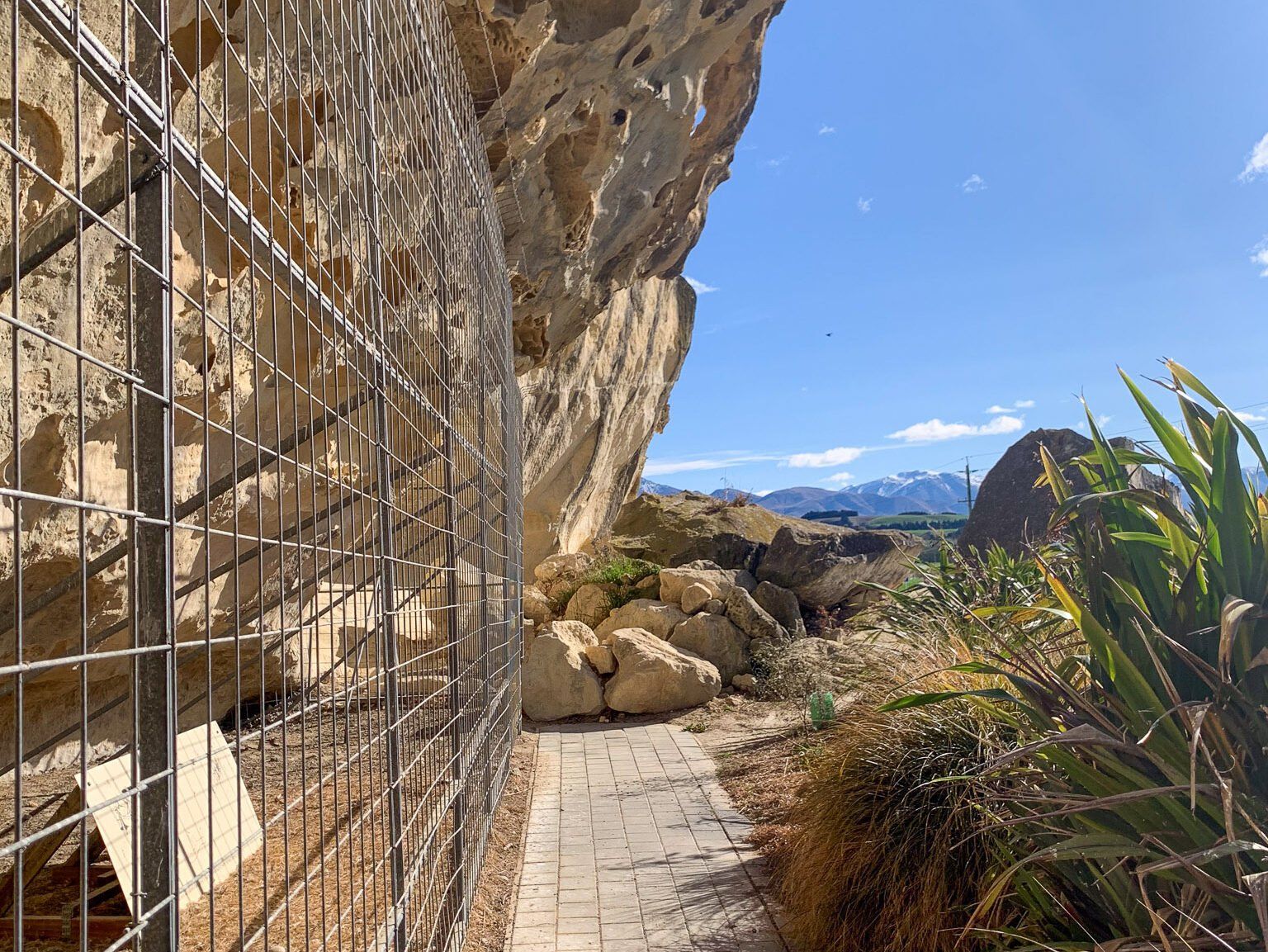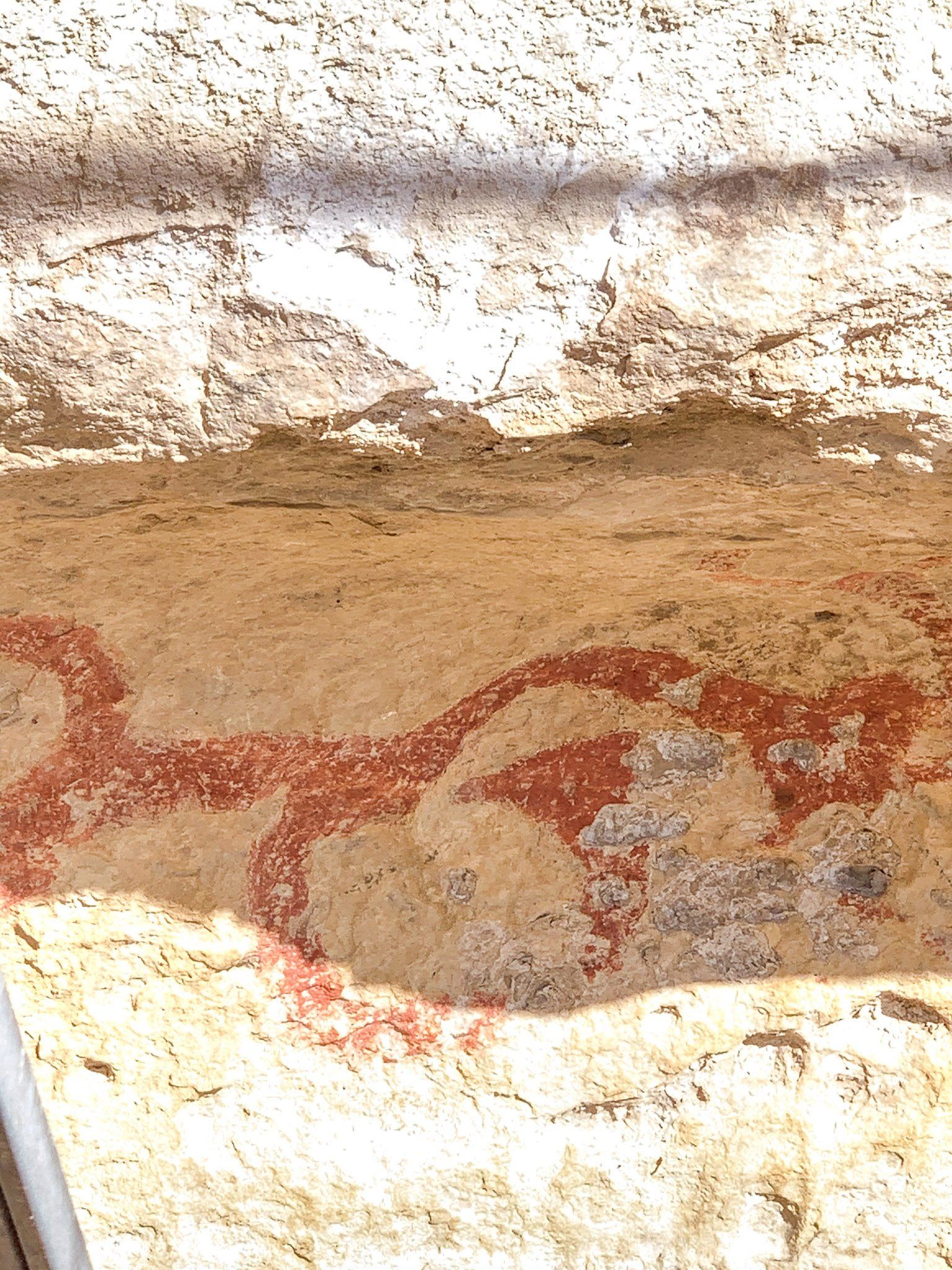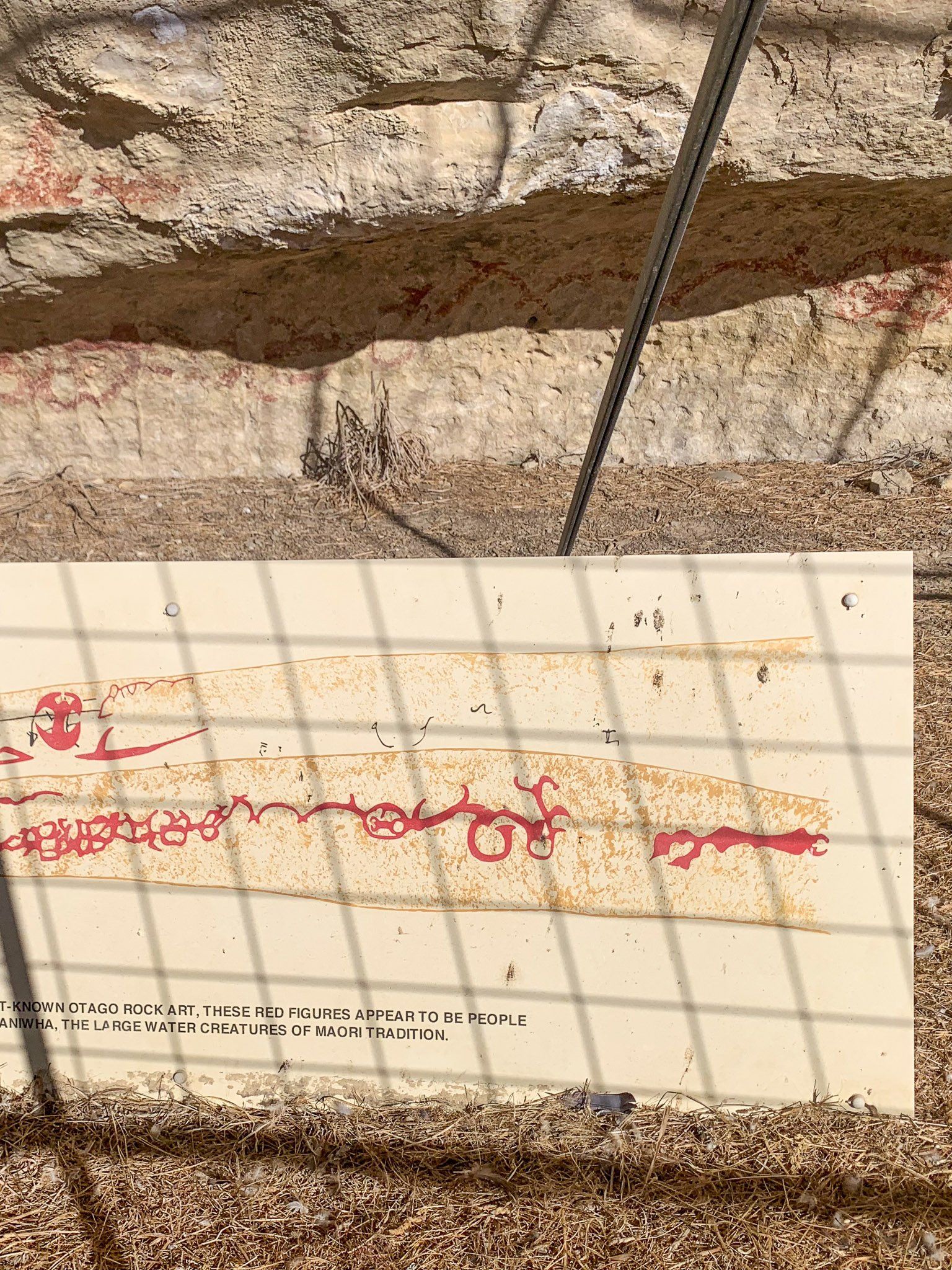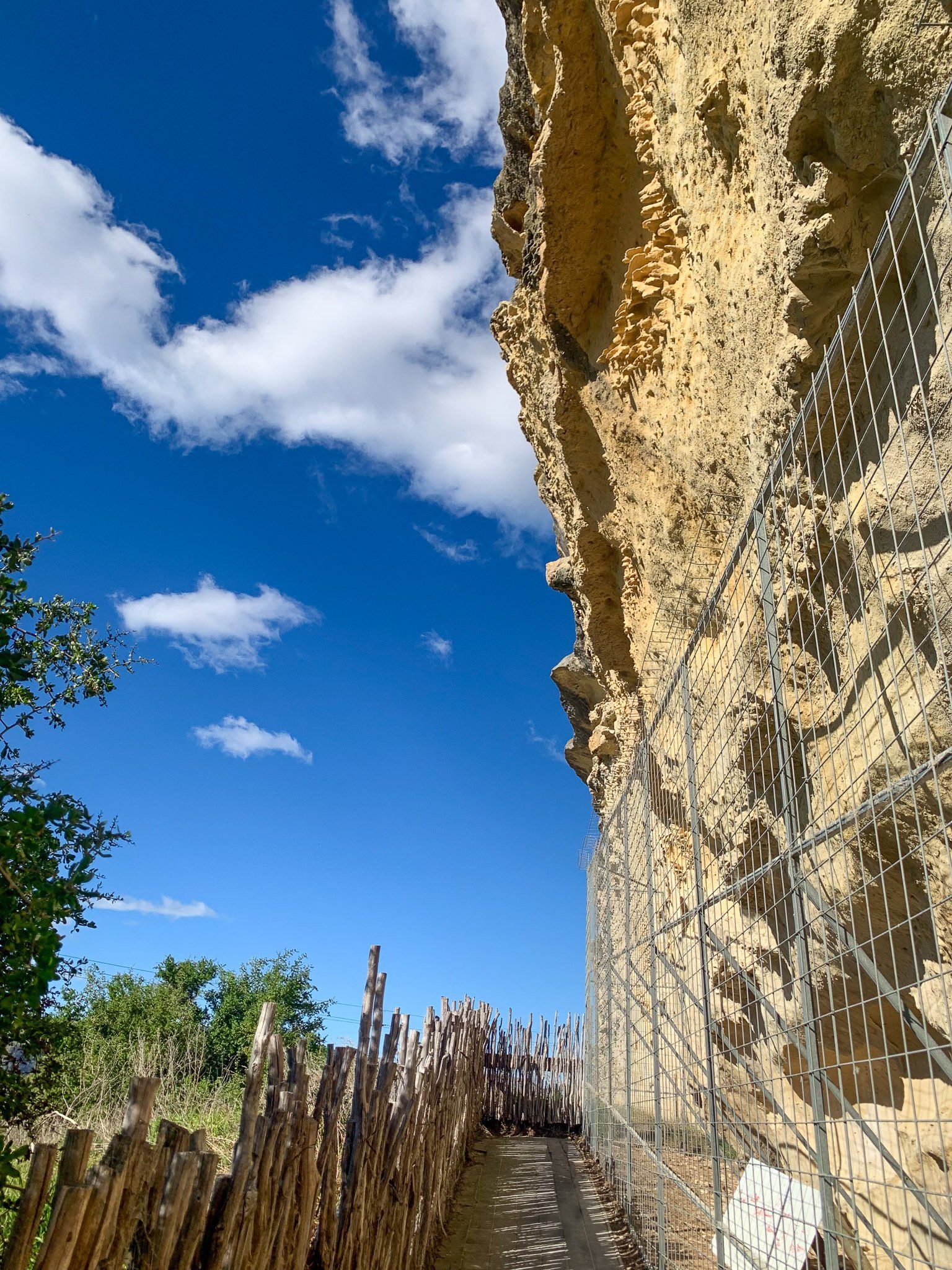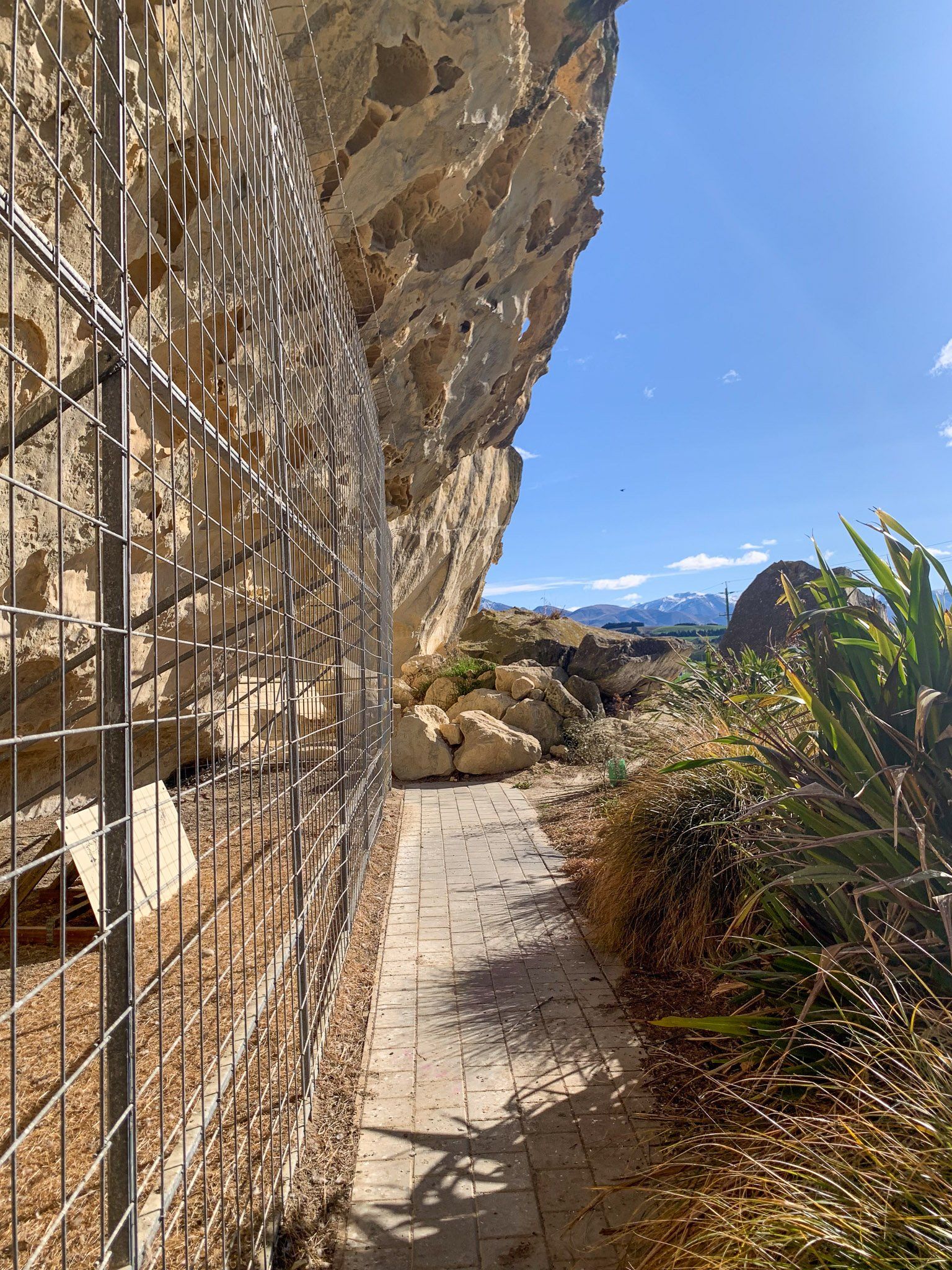The Waitaki Valley has many signs of Māori habitation and transit from around the 1400s onwards, including examples of rock art on the whitestone cliffs at Takiroa and nearby Maerewhenua. The valley and its surroundings were a major thoroughfare for moa, the large flightless birds hunted to extinction by 1600. One of the earliest archaeological digs in NZ was at the mouth of the Waitaki River, where 1,200 moa ovens were uncovered. The ovens have been destroyed by farming, but the rock art has survived.
Takiroa is on State Highway 83, two km north of Duntroon. The drawings are on the side of a limestone cliff, protected by a shelter. They date from 1400 to 1900 and record people and birds, including the appearance of Europeans with their horses and ships. The paint used in the drawings was made from ochre, bird fat, and charcoal. Some pieces were removed in 1913 and added to museum collections. Subsequently, there were measures to protect the art, but these have become more effective since Ngāi Tahu iwi gained control of the location in 1998 under the settlement of its Treaty of Waitangi claims.
Maerewhenua Rock Art is also near Duntroon. Take State Highway 83 south, then turn right into Livingstone Duntroon Road. The location is on the left, 400 metres along the road. There is a limestone overhang, and the drawings predate the arrival of Europeans. Moa bones were also found at the site, evidence that Māori occupied it. This art is located on private land but is accessible to the public.
Both locations are on the Alps2Ocean Cycle Trail.
